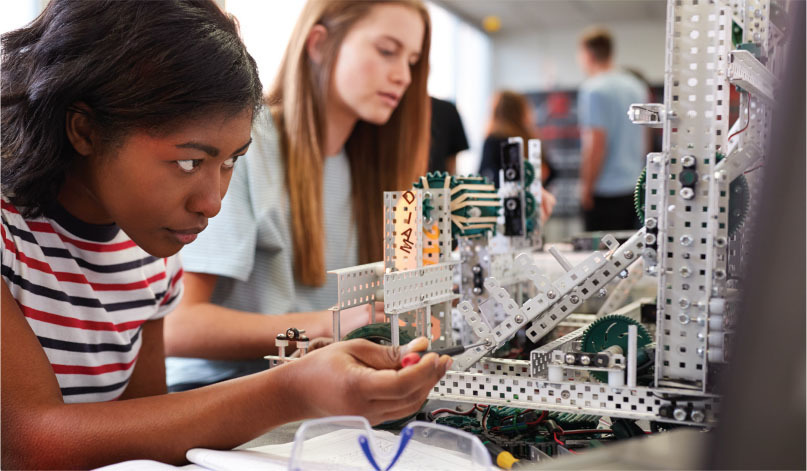March/April 2018
Communities: Education
Academy Examines Role of Engineering Societies in Education
 Engineering societies carry out many projects in support of undergraduate education, but the groups don’t always work together or with academia and industry, according to work by the National Academy of Engineering, with which NSPE participated. In addition, these efforts are rarely evaluated.
Engineering societies carry out many projects in support of undergraduate education, but the groups don’t always work together or with academia and industry, according to work by the National Academy of Engineering, with which NSPE participated. In addition, these efforts are rarely evaluated.
“Engineering societies are in many ways the link between industry and education,” explains Ken Jarboe, senior program officer for manufacturing, design, and innovation for NAE. “But there’s not a lot of understanding of what societies are really doing in terms of that link.” The goal of the work was two-fold, he adds: investigate what’s already happening and determine whether the academy can help societies be more engaged and effective.
The workshop on Engineering Societies and Undergraduate Engineering Education was held in January last year. NSPE Executive Director Mark Golden and then president Kodi Verhalen, P.E., Esq., F.NSPE, took part in the two-day meeting in Washington, DC. NAE also conducted a survey, interviews, website review, and literature review. The workshop proceedings have been recently released.
NSPE’s participation was important, Golden emphasizes, to make sure that the discussion focused not only on the need to ensure the pipeline of engineers, but also of licensed engineers.
“Too often, the importance and need to create awareness in students of licensing as an option falls through the cracks in academic discussions,” he says. “Higher education is changing dramatically. We want those changes to be positive and to maximize the licensing piece.”
Most of the societies surveyed focus their higher-education work on creating greater awareness of the importance of engineering in general or of a particular engineering discipline. The larger a society, the more likely they were to rank undergraduate students as a high-priority audience for their education efforts. Barriers included communication; resistance to change; and limited time, funding, and other resources.
As Verhalen explains, the workshop focused on how engineering societies could aid in the development of engineering education and make more real-world connections for both faculty and students. She adds, “I think there’s an opportunity to help each other, engineering educators to help societies and vice versa. We just have to figure out how to best make those connections.”
The workshop, according to Jarboe, also helped academia gain a better understanding of the constraints faced by engineering societies. They not only have to focus on serving the profession at large but also their members, he says. “Societies have a lot on their plate.”
Another constraint is budgetary. “The survey showed that engineering societies by and large think being involved in engineering education is important,” Jarboe says. “The problem is, that’s not a revenue generator.”
NAE identified about 120 engineering societies, with a lot of potential that could be tapped. But smaller societies may need assistance, Jarboe emphasizes. Their impact could be large because of their focused missions, but they also have the most limited resources.
The work will run through at least 2018. Five follow-up meetings have covered or will cover:
- The possibility of a student competition held jointly among societies;
- The role that engineering societies can play in the faculty recruitment, retention, reappointment, tenure, and promotion processes;
- Diversity and inclusion and how societies can help universities in those areas;
- The potential for common messaging defining engineering, following the earlier “Changing the Conversation” work; and
- How to better align what’s being taught in academia with what’s happening in industry, and the possibility of a role for engineering societies.
The work is important “because it’s the future,” says Jarboe. Engineering education sets the foundation for the profession and, for engineering societies, is the source of new members. “You want to make sure that the foundation is strong,” he says.


 Volunteering at NSPE is a great opportunity to grow your professional network and connect with other leaders in the field.
Volunteering at NSPE is a great opportunity to grow your professional network and connect with other leaders in the field. The National Society of Professional Engineers (NSPE) encourages you to explore the resources to cast your vote on election day:
The National Society of Professional Engineers (NSPE) encourages you to explore the resources to cast your vote on election day:



